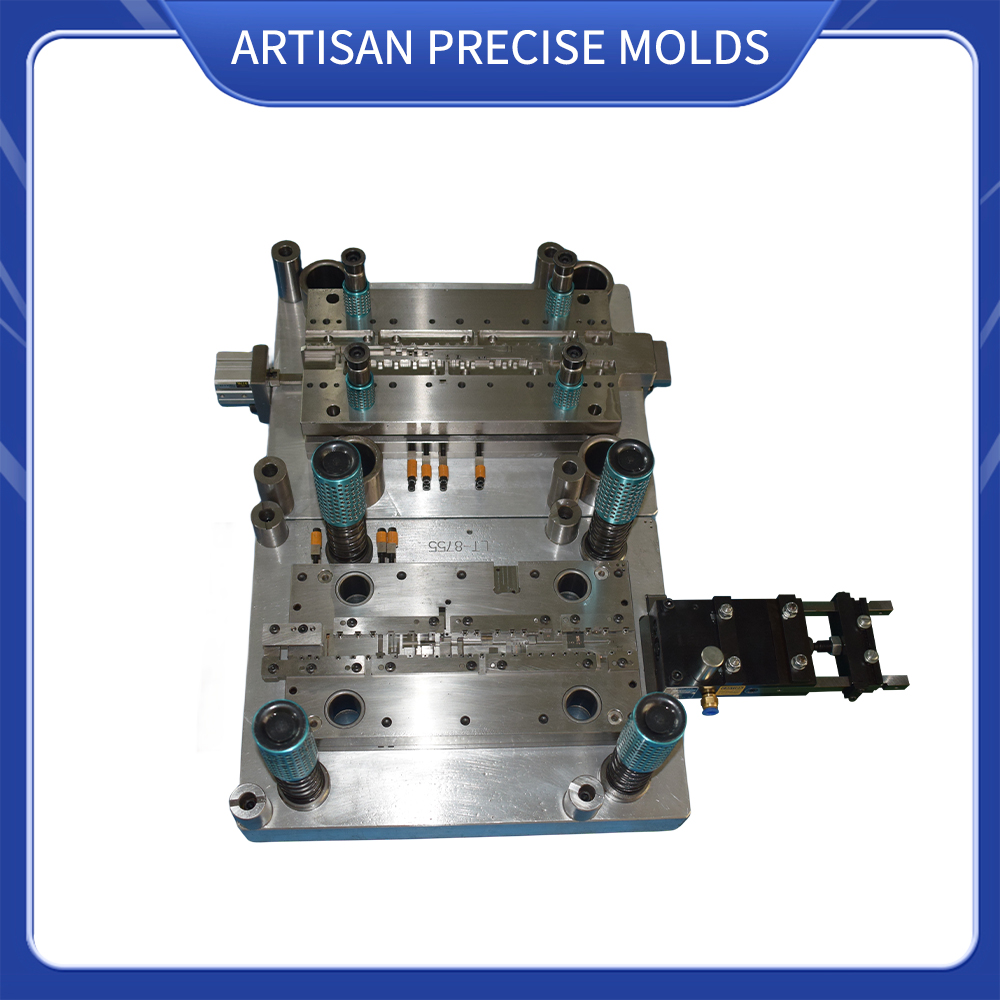Mould Processing Service
2 year agoThe design and manufacturing of a precision shrapnel continuous mould involve specialized processes to create consistent and precise metal shrapnel components for various applications. Here are some key considerations for designing and producing a precision shrapnel continuous mould:
1. Design Considerations:
- The design of the mould should accommodate the specific dimensions, shapes, and features of the shrapnel components, including thickness, length, width, and angles.
- Considerations for the material properties of the shrapnel, such as hardness, tensile strength, and impact resistance, to ensure durability and reliability in the final product.
- Integration of features such as cutting edges, serrations, or other specialized shapes to meet the functional requirements of the shrapnel components.
2. Material Selection:
- Selection of high-quality and suitable materials for the mould that can withstand the continuous moulding process and maintain dimensional accuracy.
- Materials with excellent wear resistance, thermal stability, and surface finish properties are essential for producing precise and consistent shrapnel components.
3. Precision Machining:
- Utilization of precision machining techniques, such as CNC milling, turning, or EDM (Electrical Discharge Machining), to fabricate the mould components with tight tolerances and intricate details.
- Precision machining of critical features, such as cutting edges, grooves, or embossing patterns, to ensure the accurate formation of the shrapnel components during the moulding process.
4. Continuous Moulding Process:
- Implementation of a continuous moulding process, such as stamping, pressing, or extrusion, to produce shrapnel components in a continuous and automated manner.
- Integration of feeding systems, tooling designs, and control mechanisms to maintain consistent production quality and efficiency throughout the moulding process.
5. Quality Control and Testing:
- Implementation of robust quality control measures, including dimensional inspections, material testing, and functional evaluations, to verify the accuracy and performance of the shrapnel components produced by the continuous mould.
- Testing for factors such as hardness, tensile strength, surface finish, and dimensional accuracy to ensure the reliability and functionality of the shrapnel components.
6. Customization and Flexibility:
- Ability to customize the mould design and production parameters to accommodate variations in shrapnel specifications, sizes, and shapes for different applications.
- Flexibility in adjusting the moulding process settings, tooling configurations, and material feed rates to meet specific customer requirements and production demands.
In conclusion, the design and manufacturing of a precision shrapnel continuous mould require a combination of advanced design capabilities, precision machining techniques, continuous moulding processes, and stringent quality control measures to produce high-quality and consistent shrapnel components for various industrial and commercial applications.
Other Hot Products:
Continuous Precision Stamping Die
Precision Mould Parts
Continuous Stretching Stamping Die
Robotic Stamping Die
Similar Video Recommendation
You May Also Like
If you are interested in the product, contact Bossgoovideo.com for more information
- *To:
- Artisan Precise Molds co.,Limited
- *Message:
-
Submit
Main Product:
Continuous Precision Stamping Die ,
Precision Mould Parts,
Continuous Stretching Stamping Die,
Robotic Stamping Die,
Double Strip Stamping Die,
Stamping & CNC Machining Lot Production
You May Also Like















